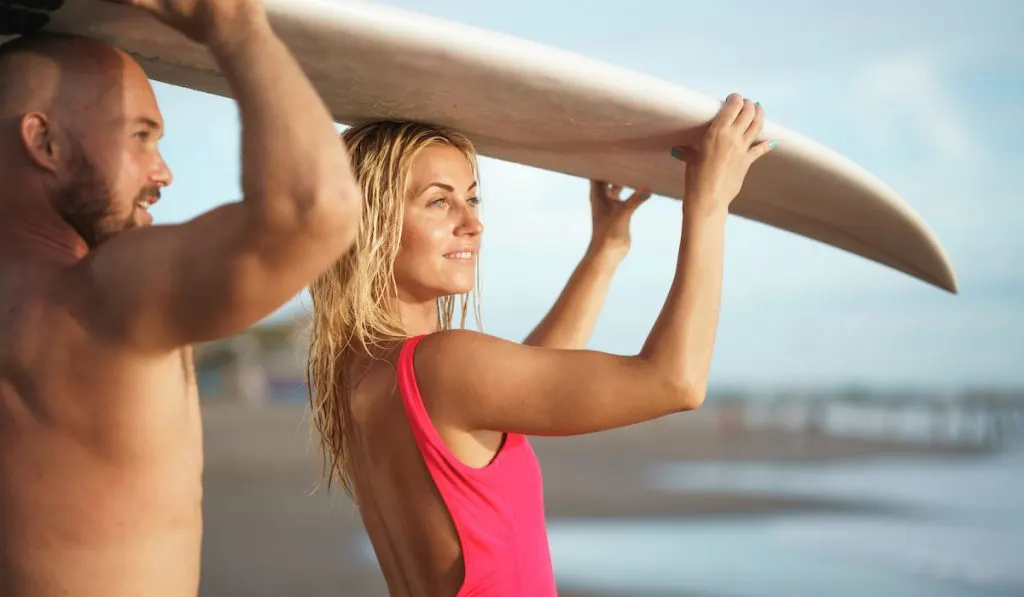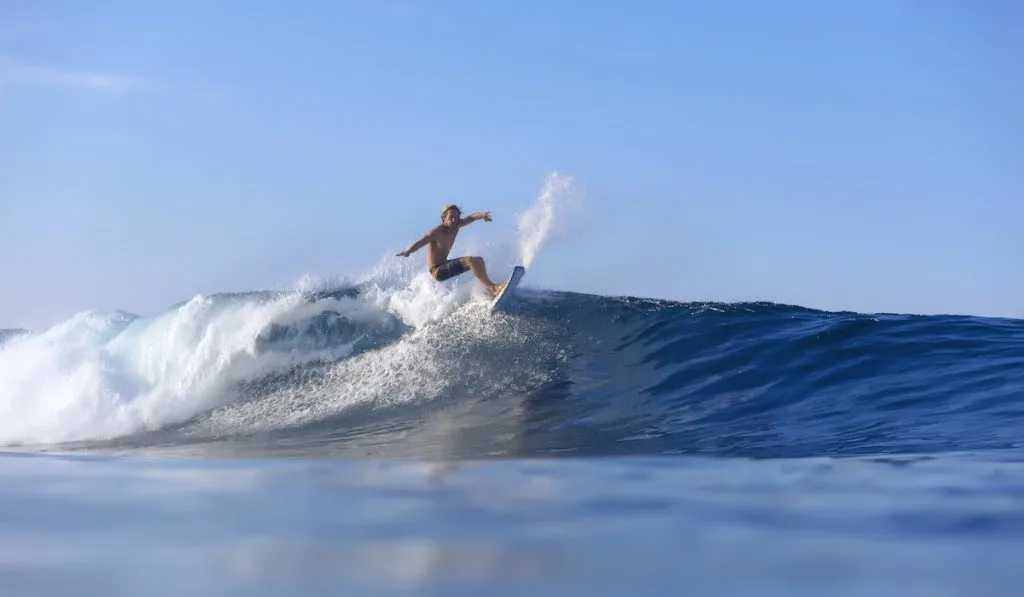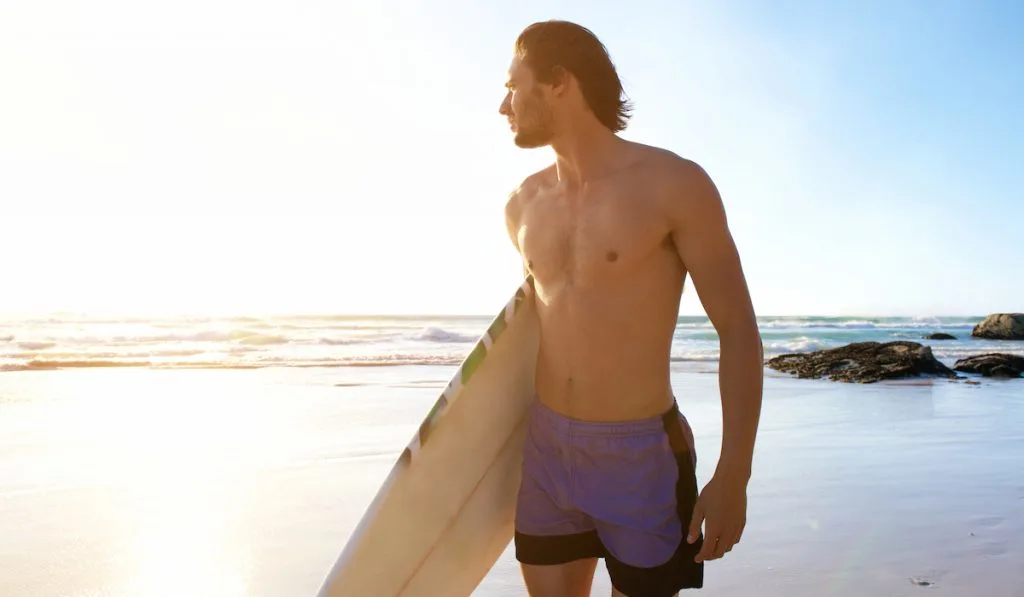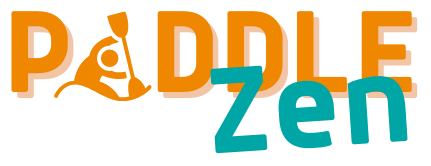Whenever you are involved in any physically challenging activity, you get the feeling that your muscle may get even stronger.
This may be true or untrue; it all depends on the type of activity you are involved in.
Can surfing build muscle?
While surfing, various muscles of the body are involved in maneuvering and maintaining balance. By repeatedly challenging the muscles by exposing them to the challenges of surfing, they become strengthened and can build up over time.

Without a doubt, there is more complexity to how surfing helps build muscle.
This article covers how you can use surfing to exercise and what to expect as far as physical fitness.
Can Surfing Build Muscle?
The process through which muscle is built is called muscle hypertrophy. Muscle hypertrophy is triggered by constantly putting your muscles through challenging physical activity.
The more a person works the muscle to contend with high levels of resistance or weight, the higher the chances of muscle growth.
It works like this: when you continually put your muscles through resistance challenges, they are damaged on a very small scale. This causes the body to repair the muscles.
In the process of repairing the muscles, the body produces more fibers.
These new fibers forming alongside the old muscle fibers contributes to the growth and increase in the size of the muscle. This is how muscles get built.
Since surfing involves resistance work when standing on a board, paddling, or riding a wave, surfing can build muscle.
When surfing, people try to maintain balance which puts some muscles through the challenge of resisting gravity. Like we already said, putting your muscles through resistance can make them bigger.
Besides maintaining balance, one must maneuver the surfboard to glide and cut through waves. In doing this, one employs certain muscles to resist the opposing force from the water.
You may also have to paddle while surfing, and in paddling, the muscles of your arm will go against the force of the water. This will also contribute to muscle growth.
Undoubtedly, surfing activities can build muscle. However, one must surf regularly to really notice their effects.
Does Surfing Count as Exercise?

How do you define exercise? It turns out that there are a few ways to look at it, but they all overlap somewhat.
Exercise can be:
- Any physical activity that raises the heart rate beyond resting level (according to Medical News Today)
- Any physical activity that is structured, planned, and repetitive to condition any part of the body to improve health and maintain fitness (according to Cleveland Clinic Martin Health)
- Any movement that makes your muscles work and your body burn calories (according to Healthline)
Surfing counts as exercise since it raises your heart rate, can require repetitive motions, and makes your muscles work together to perform that activity.
In a study conducted on Sarah and Mike Gerhardt, a Maverick surfer couple, their heart rates were observed going far above the usual maximums.
Mike had a heart rate as high as 180-200 beats per minute. A normal resting heart rate is usually between 60-100 beats per minute.
Surfing can be planned and structured, and you can do it repeatedly, too.
Then the parts of the body used in surfing are also conditioned. Surfing can also improve health by increasing cardiovascular fitness.
Is Surfing a Good Workout? How Many Calories Does It Burn?
Surfing can be a great workout. Surfing pushes all parts of your body: your hands, legs, abdominal muscles, thighs, and the muscles in your back.
Surfing does more than just give you a physical workout. It challenges your mind too.
You must prepare yourself mentally before you set out to hit the waves. While surfing, you must time the waves properly and take many other risks.
How many calories can you burn when surfing? Surfing has been shown to burn up to 250 calories in one hour.
A 130-pound person can burn as much as 180 calories within one hour of surfing. A heavier person weighing 175 pounds can burn as much as 240 calories in an hour.
What Muscle Groups Does Surfing Work?

Surfing works various muscle groups in the body. Muscles of the heart, chest, hands, abdomen, and legs all get a good workout from surfing.
Muscles like the myocardium, biceps, triceps, trapezius, obliques, and rectus abdominis are worked during surfing.
Some other muscles involved include deltoids, gluteus, latissimus dorsi, biceps femoris, and quadriceps femoris.
The myocardium is the muscle of the heart. As your heart pounds while you surf, its muscles get a workout.
The biceps are in the front of the upper arm. The triceps are located at the back of the upper arm.
These 2 sets of muscles are worked out when you are paddling and popping up.
The trapezius is in the upper part of the back, and it is worked through paddling.
The deltoid muscle is in the shoulder and is involved in paddling and pop-ups.
The latissimus dorsi is in the mid-portion of the back. It is worked when paddling, popping up, and when on the wave.
The rectus abdominis and obliques are in the abdomen. They are worked when paddling, when on the wave, and when popping up.
The gluteus muscles are in the buttocks, and they are worked when you are on the wave and when you pop up.
The quadriceps femoris is located at the frontal part of the thigh. The biceps femoris is located at the back of the thigh.
Both sets of muscles are involved and worked in pop-ups and when you are on a wave.
Since you will be working out so many muscles while surfing, it is only right that you warm up before you surf.
Warming up gets your muscles ready for the challenge to come and reduces the chances of muscle injuries.
Some pre-surfing routines you can adopt include stretching, crouching, spine alignment, and neck rolls.
Besides these, you can also take slow, deep, measured breaths to get your lungs ready for the ride.
Can Surfing Help You Get Fit?
Generally speaking, fitness is wellbeing. It is a state in which one is healthy and can fulfill activities efficiently without unnecessary fatigues.
Fitness is also the ability of a person to resist disease.

Surfing helps you burn calories, builds your muscles, improves your heart function, and improves your mental function.
Surfing also helps with your sleep, balance, and coordination.
Considering these benefits, surfing can certainly help people get fit.
If you burn calories, you are unlikely to become overweight. If you are not overweight, you won’t be prone to diseases.
You will also be able to move around easily to fulfill your daily activities.
By building and strengthening your muscles, surfing can raise your physical endurance. This makes it less likely for you to become fatigued.
Of course, by improving your heart function, surfing can reduce the likelihood of you having heart diseases.
With improved mental function and with better sleep, you will experience fewer bouts of mental fatigue. This way, you can handle your roles better.
Conclusion
Surfing can build muscle. When you surf, you challenge various muscles all over your body.
It is expected that those muscles will grow as they heal. But beyond that, surfing is a great way to exercise and burn excess calories.
Resources
- https://www.thewave.com/blog/health-benefits-surfing-body-and-mind/
- https://www.medicalnewstoday.com/articles/319151
- https://www.verywellfit.com/muscle-hypertrophy-definition-3120349
- https://www.medicalnewstoday.com/articles/153390
- https://www.martinhealth.org/what-is-exercise
- https://www.healthline.com/nutrition/10-benefits-of-exercise
- https://www.surfer.com/surfing-magazine-archive/surfing-originals/surfing-opinion/mavericks-at-180-beats-per-minute/
- https://www.betterhealth.vic.gov.au/health/healthyliving/surfing-health-benefits#
- https://www.booksurfcamps.com/news/calorie-burning-water-sports
- https://www.latimes.com/archives/la-xpm-2011-jan-03-la-he-fun-fitness-surfing-20110103-story.html
- https://www.surfertoday.com/surfing/what-are-the-muscles-used-in-surfing
- https://sonofabea.ch/muscles-involved-surfing/
- https://www.surfertoday.com/surfing/the-5-minute-pre-surf-warm-up
- https://www.hussle.com/blog/what-does-being-fit-actually-mean/
- https://www.smh.com.au/lifestyle/health-and-wellness/what-does-it-mean-to-be-fit-20170509-gw0oze.html
- https://www.spunkfitness.com/what-does-it-mean-to-be-physically-fit/
- https://www.midtown.com/blog/what-does-being-fit-mean-exploring-the-5-components-of-physical-fitness#
